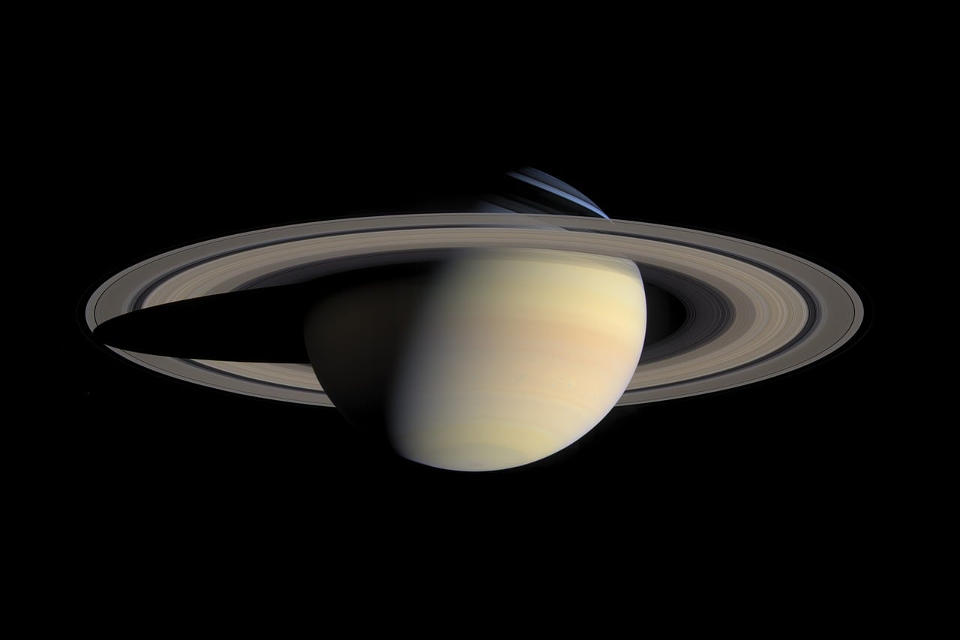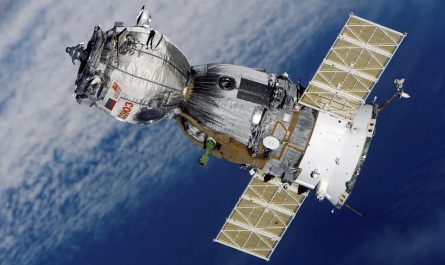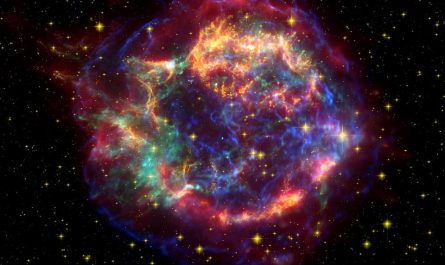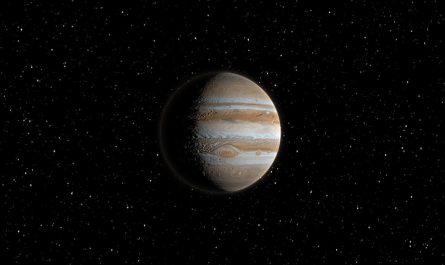Saturn is one of the most iconic planets in our solar system. It has been depicted in pop culture for hundreds of years and is easily recognizable thanks to the large rings that surround it. But did you know that Saturn isn’t the only planet in our solar system with rings? We’ve put together this and dozens of other mind-blowing facts about Saturn. There is so much to know about this big, beautiful planet; check out our list of 25 of the most interesting and sensational Saturn facts we could find.
25 Facts About Saturn
1. Saturn is 4.5 billion years old. (source) Saturn was born right after Jupiter, with both planets forming during the early days of our solar system. They are believed to have formed closer to the sun and moved to their current positions roughly 4 billion years ago.
2. Saturn was first observed with a telescope in 1610. (source) Galileo was the first to observe Saturn with a telescope. He wasn’t able to tell what the rings around Saturn were, so he guessed they were arms of some sort. It wasn’t until 1659 that they were found to be a ring system around the planet.
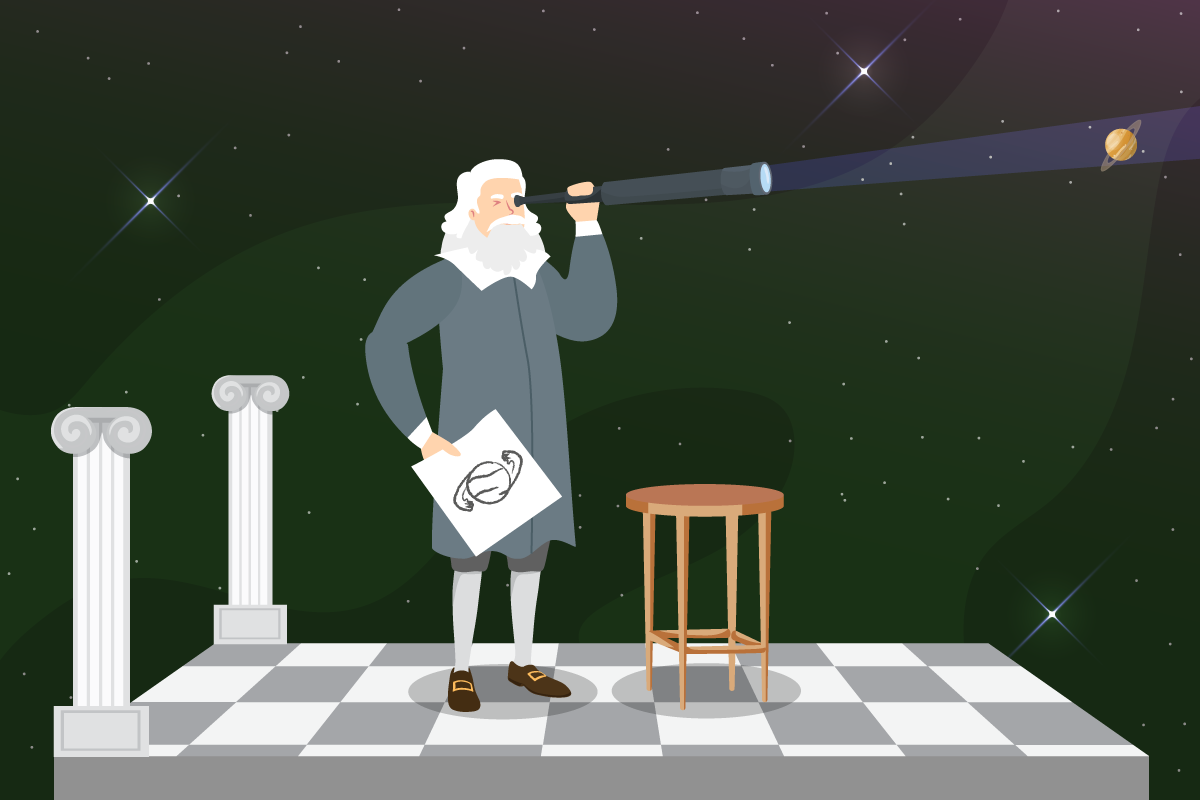
3. Saturn was named for the Roman god of agriculture and time. (source) The Romans named the bright objects they could see in the sky after their most important gods, Saturn being one of them. Saturn’s slow orbit around the sun may have led to it being named after the Roman god of time.
4. Saturn takes 29.5 Earth years to orbit the sun. (source) Saturn takes a much longer time to orbit the sun because it is about 9.5 times farther from the sun than Earth is.
5. Saturn rotates at a speed of 22,891 mph (36,840 km/hr). (source) Saturn’s rotational speed is 24 times faster than Earth’s and is the second-fastest rotational speed in our solar system, after Jupiter.
6. Saturn can float on water. (source) Saturn is made up of mainly gases, making it less dense than water. Saturn has the lowest density of all of the planets.
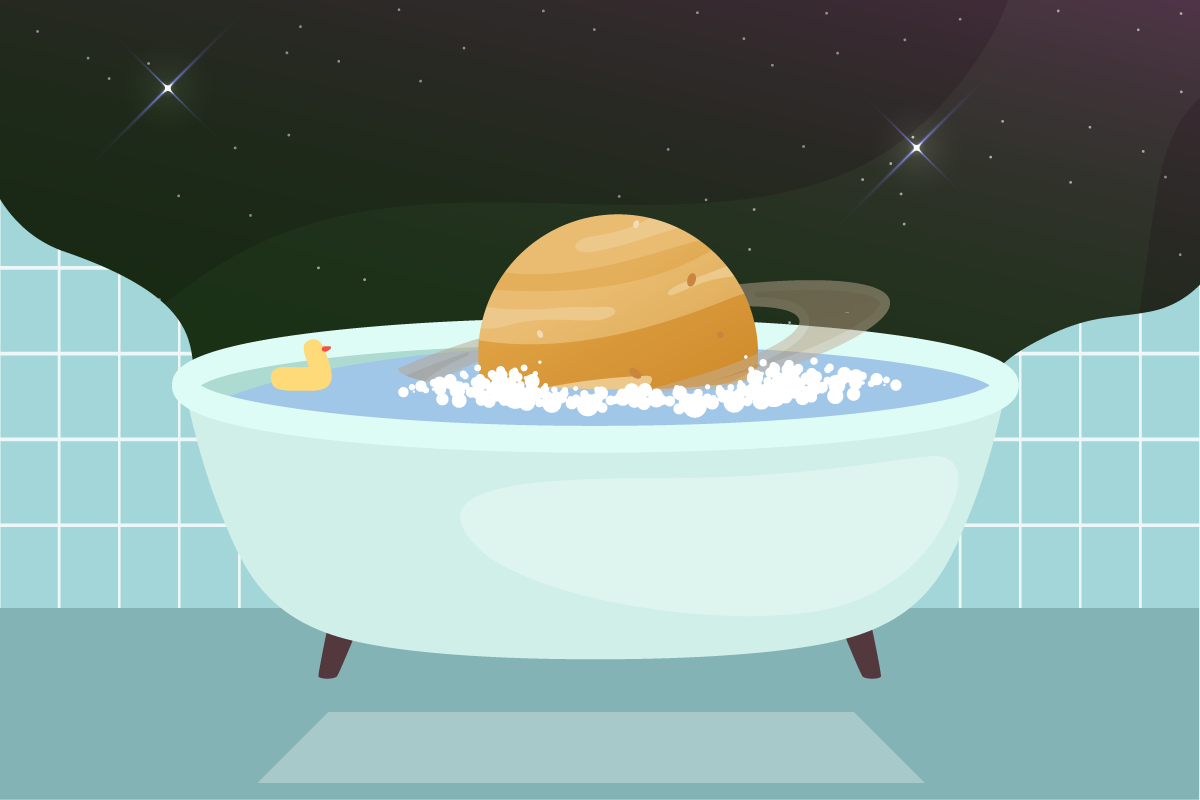
7. The earliest depiction of Saturn in fiction was in 1752. (source) Saturn first made its appearance in fiction in the 1752 novel Micromégas by Voltaire. Since then, it has appeared in a wide variety of books, films, and other media, often portrayed as being inhabited by aliens.
8. Saturn is the ruling planet of the number 8. (source) According to numerology, people born on the 8th, 17th, or 26th day of the month are 8’s and are said to be blessed by Saturn. People associated with this number are said to be honest and hardworking.
9. The length of one day on Saturn is 10 hours 33 minutes. (source) Saturn has the second-shortest day in our solar system, after Jupiter, due to its high speed of rotation.
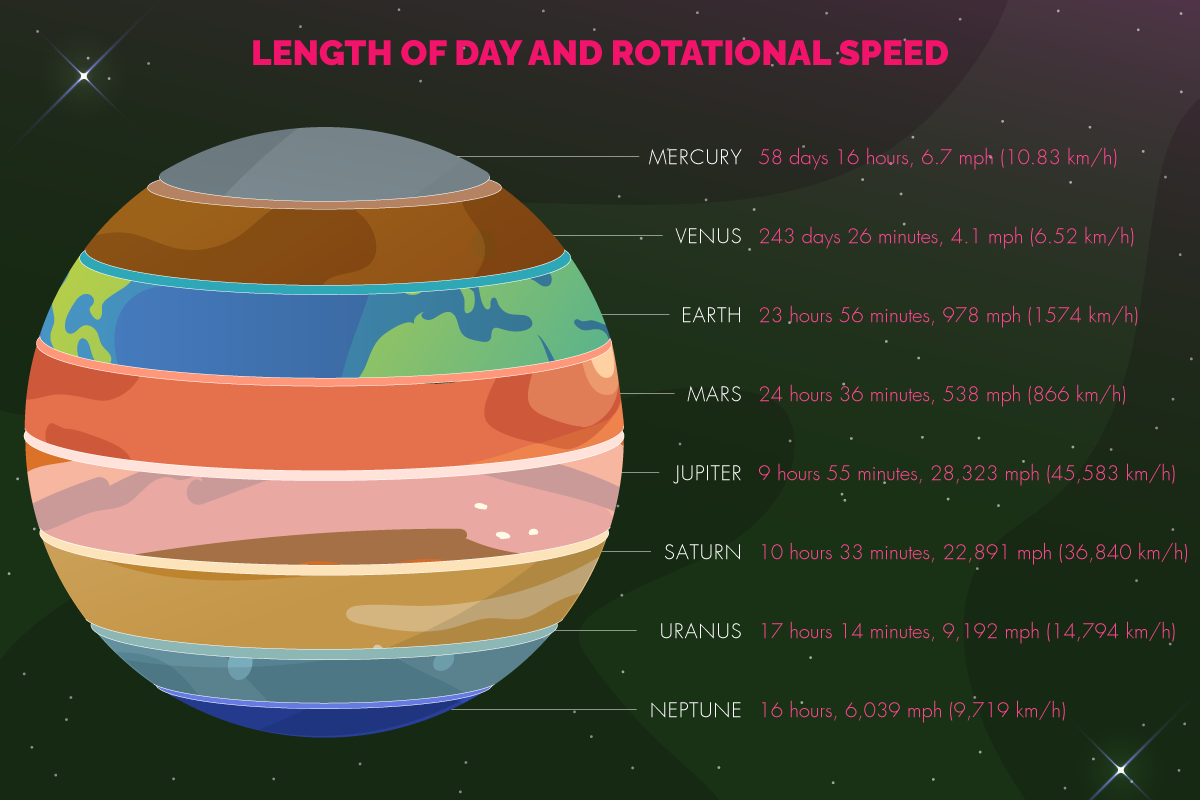
10. Saturn has 145 moons. (source) In May 2023, astronomers shared their discovery of 62 new moons around Saturn, increasing the planet’s previous count of 83 moons to a new total of 145. Saturn now is believed to have the most moons in our solar system.
11. Saturn’s gravity is 1.08 times the gravity on Earth. (source) This means that an object that weighs 100 pounds on Earth would weigh 108 pounds on Saturn.
12. Saturday is named after Saturn. (source) Saturday is named after the Roman god and planet Saturn, shortened from Saturn’s Day. It is also the only day of the week that kept the Roman origin of its name in English.
13. Saturn has seven rings around it. (source) The rings were labeled in the order in which they were discovered; from the planet outward, the rings are D, C, B, A, F, G, and E. The main rings are A, B, and C; the A ring is the one most easily seen with a basic telescope.
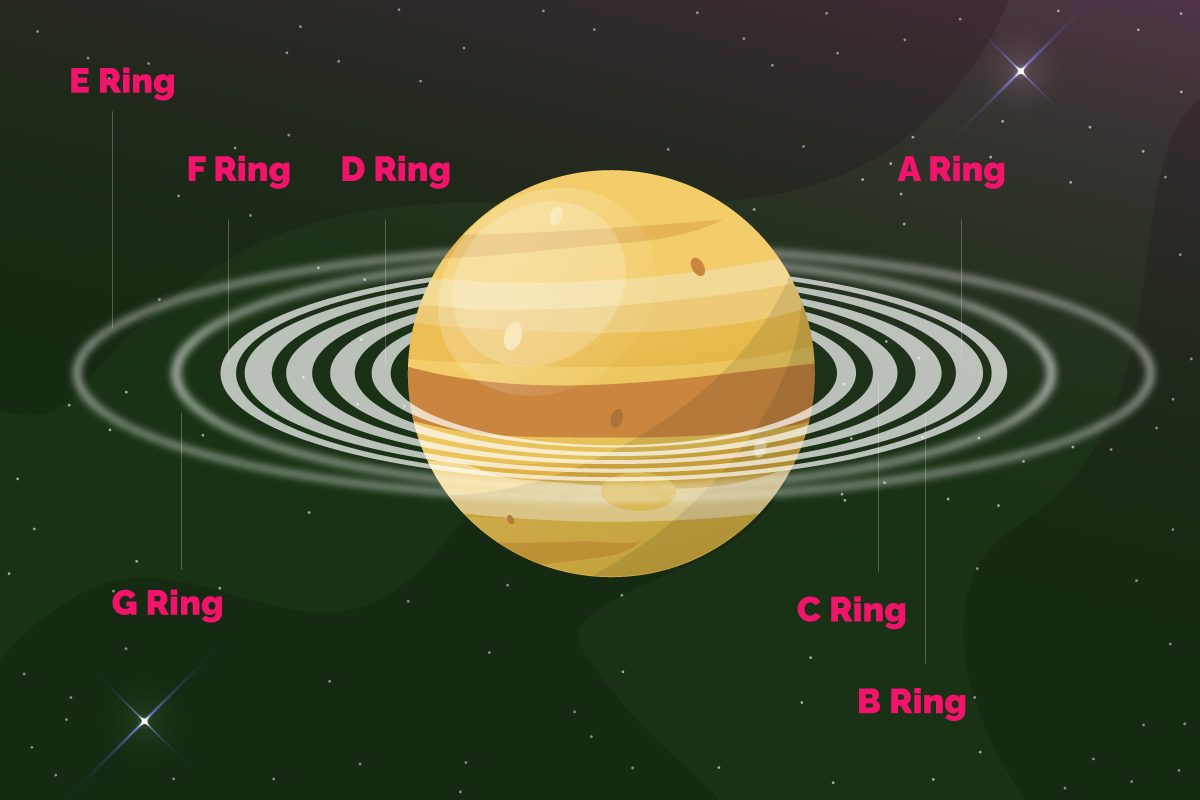
14. Saturn’s rings are made of chunks of ice, dust, and rocks. (source) Saturn’s rings may appear to be solid, but they are actually made up of many chunks of ice, dust, and rocks that are orbiting the planet at a high rate of speed. The chunks vary in size from as small as a grain of sand to as big as a house.
15. Saturn receives 1% of the amount of sunlight that Earth does. (source) Saturn is 9.5 times farther from the sun than Earth is, and due to this long distance, receives much less sunlight per square meter.
16. Saturn is almost 900 million miles from the sun. (source) Saturn is the sixth planet from the sun, with a space of 889 million miles between the two. It takes sunlight 80 minutes to travel from the sun to Saturn.
17. Saturn’s rings are much younger than the planet. (source) Research has revealed that Saturn’s rings are no older than 400 million years, making the planet ten times older than its iconic rings.
18. Saturn isn’t the only planet with rings. (source) Four of the planets in our solar system have rings, and they are all gas giants: Jupiter, Saturn, Uranus, and Neptune. Saturn’s rings were discovered far earlier because they are much bigger and brighter than the rings around Jupiter, Uranus, and Neptune.
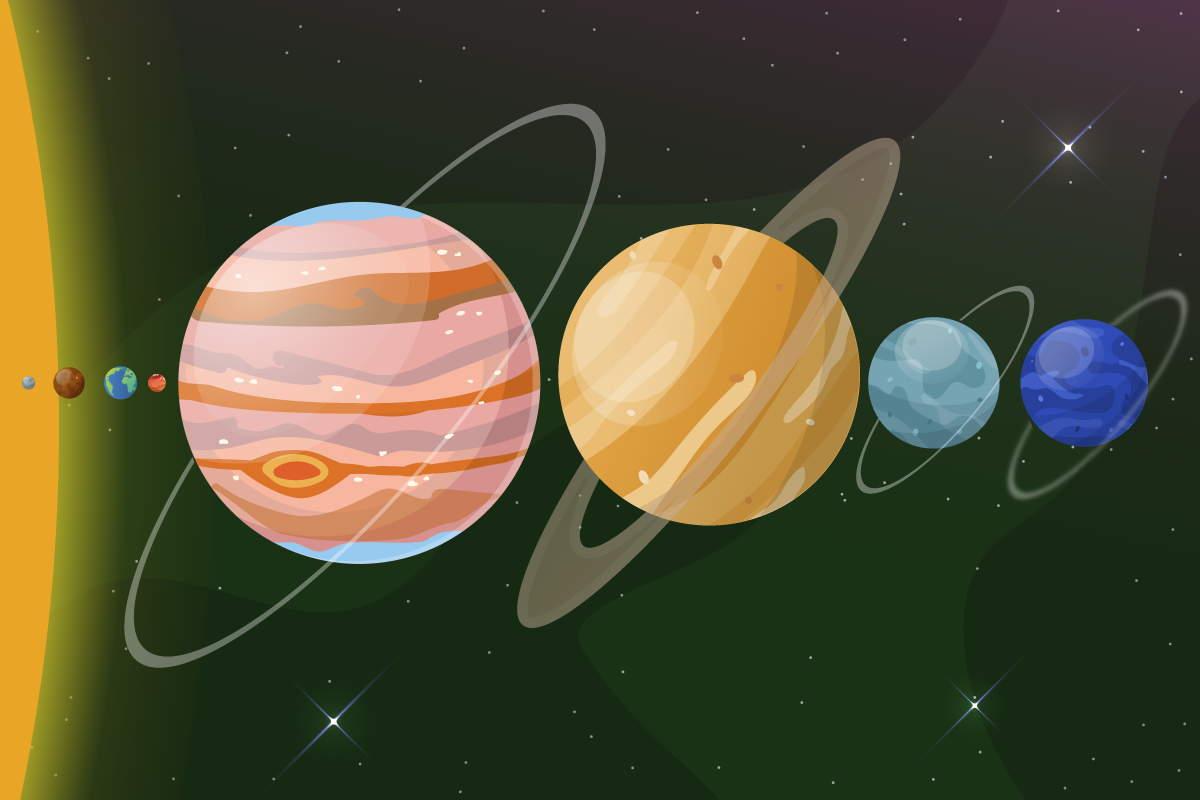
19. Saturn could hold 760 Earths inside of it. (source) Saturn is the second-largest planet in our solar system and is 95 times larger than Earth.
20. Saturn has the second-largest moon in our solar system. (source) Titan is the largest moon orbiting Saturn, and it’s just 2% smaller than Jupiter’s moon Ganymede, which is the largest. Titan is even bigger than the plant Mercury.
21. Winds on Saturn can reach 1,118 miles per hour. (source) That’s more than four times faster than the strongest hurricane-force winds on Earth, which reach speeds of 246 miles per hour. These extremely fast wind speeds occur in the equatorial region of Saturn.
22. Saturn’s moons could support life. (source) Two of Saturn’s moons, Titan and Enceladus, have atmospheres with similar compositions to Earth’s, cloud coverage, and standing bodies of liquid.
23. Saturn is one of five planets that can be seen with the naked eye. (source) It can be seen without a telescope because of its massive size and because it’s one of the brightest objects in our solar system. The other planets that can be seen with the naked eye include Mercury, Venus, Mars, and Jupiter.
24. There have been four robotic spacecraft missions to Saturn. (source) The first was NASA’s Pioneer 11, which provided a close look in 1979; then, NASA’s Voyager 1 and Voyager 2 did flybys in 1980 and 1981. In 2004, the Cassini spacecraft started its mission, studying Saturn for the next 13 years.
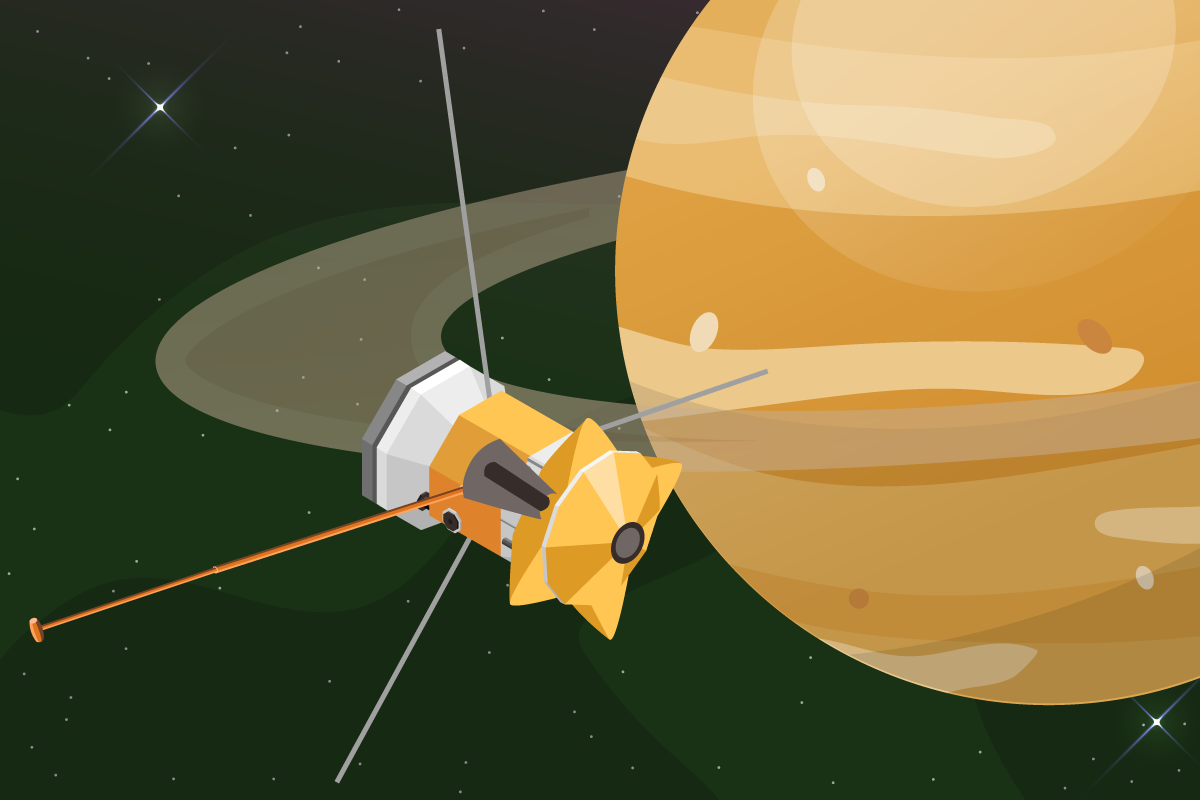
25. When the Cassini spacecraft’s mission was completed, it was vaporized by Saturn. (source) The spacecraft was plunged into Saturn’s atmosphere, where it would be vaporized; this was intentionally done so that its remains would not affect Saturn’s moons or future exploration.
Did you like these facts about Saturn? Visit our facts about space page for more. Or jump straight to these other featured planets:

